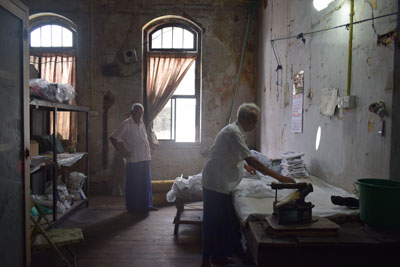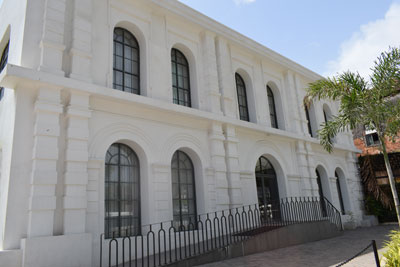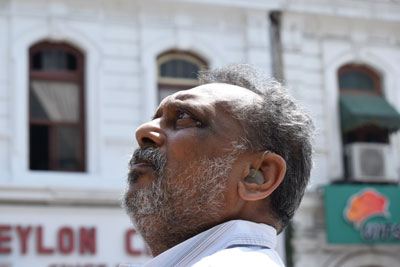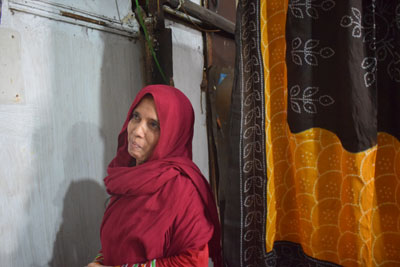News
Rundown Soysa Building in Slave Island to be pulled down, facade to be replicated
The Soysa building in Slave Island will be pulled down and a new one with the same facade erected a short distance away to allow for road expansion, the Urban Development Authority (UDA) and land developers Tata Housing have decided.

Upstairs at Ceylon Cleaners
The beautiful Victorian edifice opposite the Slave Island railway station has, at 200 yards, the longest road frontage of any building in Sri Lanka of the same era. It will now suffer a similar fate to that of the nearby 140-year-old Castle Hotel demolished in May 2017.
Erected by the great philanthropist Charles Henry de Soysa, it was described by eminent architect Ismeth Raheem as “a remarkable gem of colonial architecture and century-old heritage building”. It is one of the earliest examples of shop houses in Sri Lanka; shops at the bottom, homes on top. Elsewhere in Asia, these rare structures are protected by strict regulations and are premium spaces for apartments and shops.
The UDA argues, however, that the Soysa building is in a perilous state. “It is largely rundown,” said Jagath Nandana Munasinghe, the Authority’s Chairman. “So rather than rebuild or restore it, it was decided to put up a new building with the same facade and same character.”
This is not new. Last year, the same was said of the salmon-hued, chipper Castle Hotel. The developers tore it down saying the first two floors of anything constructed on that site will have the same facade and aesthetics of the old building. A UDA director insisted that every line and angle was measured and recorded before the Castle Hotel was demolished; and that the new designs were made in close consultation with the Department of Archaeology.
But the gleaming white structure that rose there–and which now houses the Tata project office–is nothing like the Castle Hotel. The new facade is a whisper of the old edifice. The interior is clinical and devoid of character. A wrought iron staircase winds up the centre. There are no echoes of the past here.
It is not difficult to see the same happening with the Soysa building. The structure that rises from its remains will not even be in the same place. “There is a requirement for a road widening by the Road Development Authority (RDA) as well as an overhead bridge over the railway crossing,” said Mr Munasinghe. “So the building will have to be demolished and moved back.”
The Archaeological Department’s role in all this remains murky. It has failed to list heritage buildings for protection, even after the fate of Castle Hotel was highlighted last year. Under law, any monument constructed before March 2, 1815, is automatically protected. But something erected after that date needs to be gazetted by the relevant minister.

The former Castle Hotel
The Department said this week the Soysa Building was recommended for gazetting to the relevant division but that it hadn’t been done yet. It was not immediately clear why. But officials had also famously waffled over the Castle Hotel–right up to the time it was bulldozed, ironically with the Department’s written approval.
There are other issues here. The deeds to the Castle Hotel property and the Soysa building are held by descendants of Charles: his great-grandchildren Ranil, Malathie and the late Geethal and Jayalath. Ranil showed this newspaper attested copies of the deeds. He also has the plan. But despite repeated entreaties to the authorities, the de Soysas have not received compensation for their properties.
The UDA insists that, pursuant to estimation by the Government Valuer, necessary monies have been deposited with the divisional secretary. “He is responsible for establishing ownership and paying the compensation,” Mr Munasinghe said. But he admitted there could be issues when tenants, such as those in the Soysa building, have occupied these spaces for many years.
From the inception of the UDA, the then Prime Minister and Minister of Housing Ranasinghe Premadasa and R Paskalaralingam had opposed demolition of these buildings, Ranil said. Prof Nimal de Silva, a former UDA Chairman, wrote to the tenants instructing them to refrain from colour washing the exteriors in various shades or from changing the structure as the building held historical value. One UDA director even did a full study with the University of Moratuwa.
“Had it been allowed, there were many developers in the past to tear it down and build something else,” he said. “This building has a history from the 1850s, but not in the eyes of those in the pockets of TATA who are condemning the building despite it still being habitable, with people living there and carrying out their businesses. No structural engineer or municipality has given notice for demolition. Other buildings in worse condition and falling to pieces were repaired and restored.”
Fifty-year-old Kareema Anwar Deen has lived in the Soysa building for 18 years, above Ceylon Cleaners which has occupied the space since 1934. She pointed to the solid wooden floors and said they were strong enough to run on.
There is history in every block and beam of the Soysa building: from the people who have worked there for decades to the families that clamber up narrow, wooden staircases to their homes upstairs; from the faces peering out of the arched windows to its distinctive colours. Some things once lost cannot be replicated.

Ranil de Soysa has not received compensation

Kareema has lived here for 18 years
| Archaeological Impact Assessment | |
| Sri Lanka’s law requires that an Archaeological Impact Assessment (AIA) be done in respect of every development project to be carried out on land exceeding 0.25 hectares in extent. The Tata Housing project in Slave Island clearly qualifies–but no AIA was ordered or done. These surveys are carried out to determine whether there are antiquities on the land, to gauge the impact of the project on these antiquities and to recommend alternatives. The provisions are contained in the orders made by the Minister of Cultural and Religious Affairs under the Antiquities Ordinance and gazetted in April 2000. They are the Project Procedure Orders No 1 of 2000. The written permission of the Department of Archaeology should be taken before any project over 0.25 hectares is implemented. The development of transport systems and construction of housing complexes is included. But the UDA official in charge of the Tata Housing project told the Sunday Times in 2017 that he was not aware of such a requirement. If an AIA was not carried out, the Department of Archaeology would be within its rights to file legal action after determining the facts of the case. This has not been done. The Department of Archaeology said last year that a list of historic buildings in the Fort area will be gazetted in the near future. The Soysa Building, however, falls within the street line. Those proposed to be gazetted were protected monuments – they are the Accident Ward of the Colombo National Hospital and the Rajya Osu Sala in the Town Hall area. This has also not been done. |

